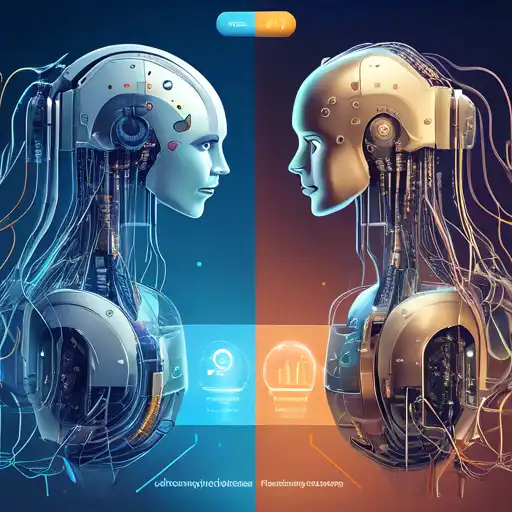Introduction to Machine Learning and Deep Learning
In the realm of artificial intelligence (AI), Machine Learning (ML) and Deep Learning (DL) are two pivotal technologies that have revolutionized how machines interpret data. While they share common ground, their approaches and applications differ significantly.
What is Machine Learning?
Machine Learning is a subset of AI that enables systems to learn and improve from experience without being explicitly programmed. It focuses on the development of algorithms that can process data, learn from it, and make informed decisions based on that learning.
Key Features of Machine Learning
- Requires structured data
- Relies on human intervention for feature extraction
- Works well with smaller datasets
- Less computationally intensive
What is Deep Learning?
Deep Learning, a more advanced subset of ML, mimics the workings of the human brain in processing data for decision making. It uses neural networks with several layers (hence 'deep') to learn from large amounts of data.
Key Features of Deep Learning
- Can process unstructured data like images and text
- Automatically extracts features without human intervention
- Requires large datasets for effective learning
- More computationally intensive
Comparing Machine Learning and Deep Learning
While both ML and DL aim to teach machines to learn from data, their methodologies and applications set them apart. Here's a closer look at their differences:
Data Dependency
ML algorithms perform well with smaller datasets, whereas DL requires vast amounts of data to achieve high accuracy.
Feature Extraction
In ML, feature extraction is manual and requires domain expertise. DL, however, automates this process, making it more efficient for complex tasks.
Computational Power
DL models are computationally intensive, often requiring GPUs for training, unlike ML models that can run on standard CPUs.
Interpretability
ML models are generally more interpretable than DL models, whose decisions can sometimes be a 'black box'.
Choosing Between Machine Learning and Deep Learning
The choice between ML and DL depends on the specific problem, available data, and computational resources. ML is preferable for smaller datasets and when interpretability is key. DL excels in handling complex, unstructured data but demands more resources.
Conclusion
Understanding the differences between Machine Learning and Deep Learning is crucial for leveraging the right technology for your AI projects. While ML offers simplicity and efficiency for straightforward tasks, DL provides the power and flexibility needed for more complex challenges.
